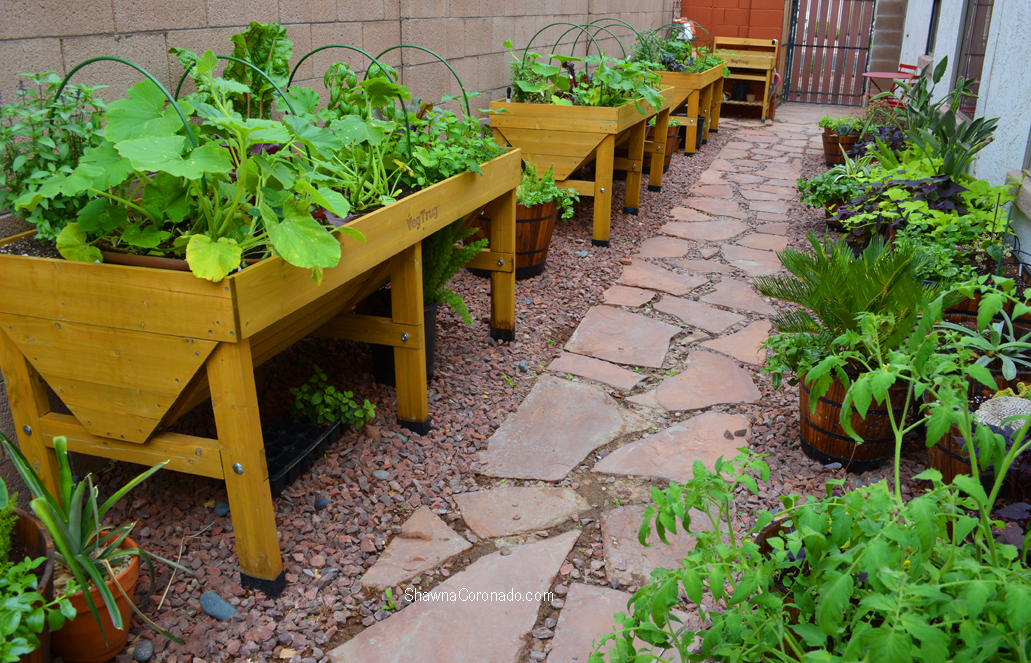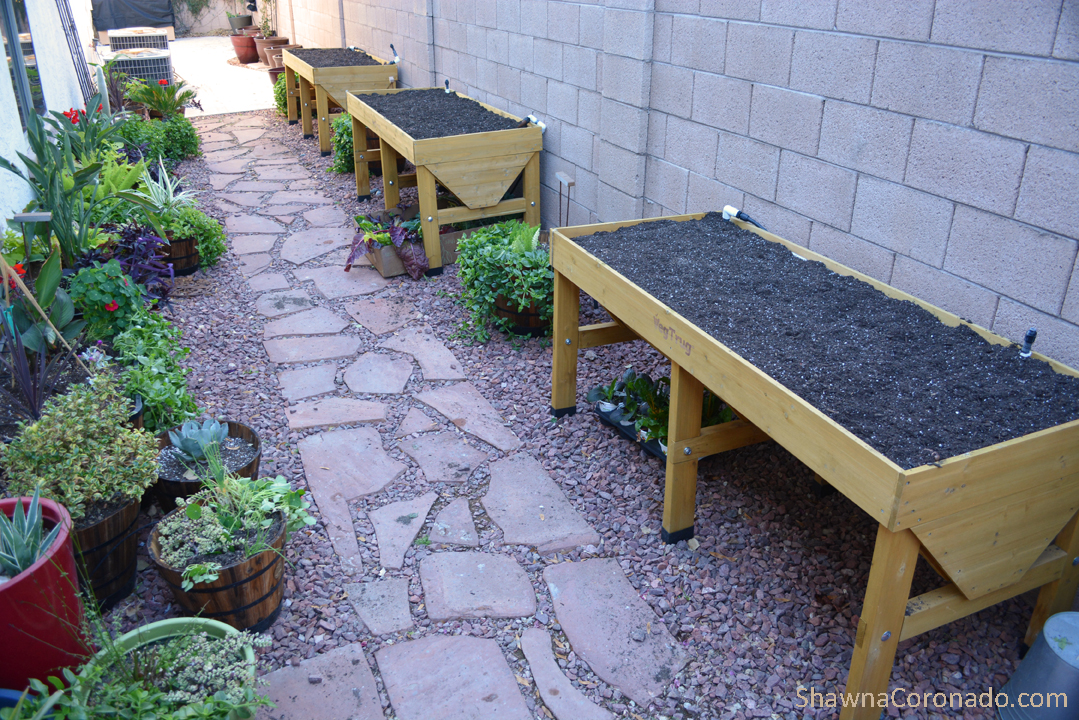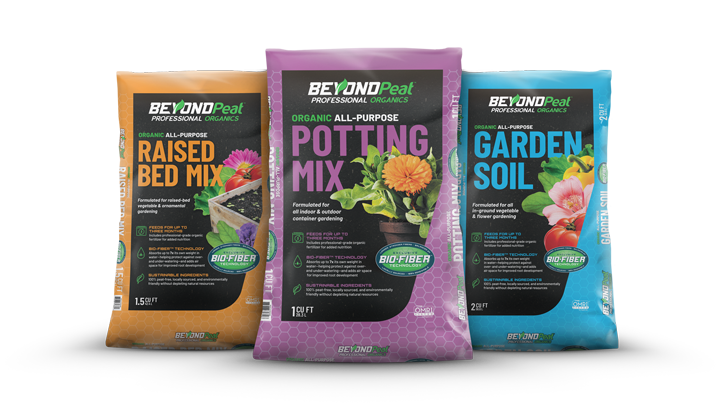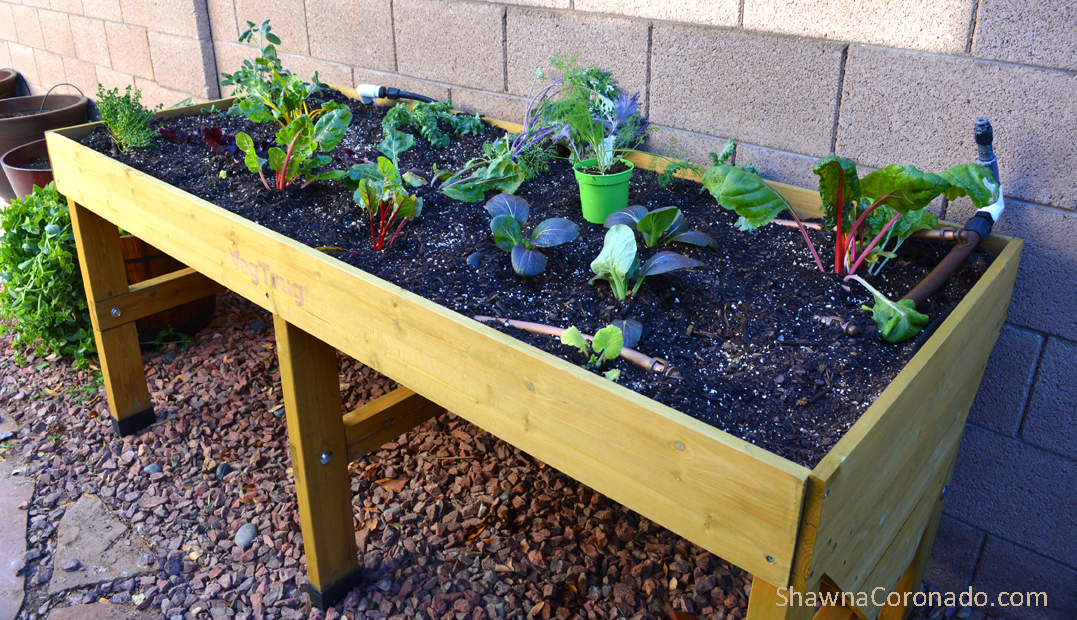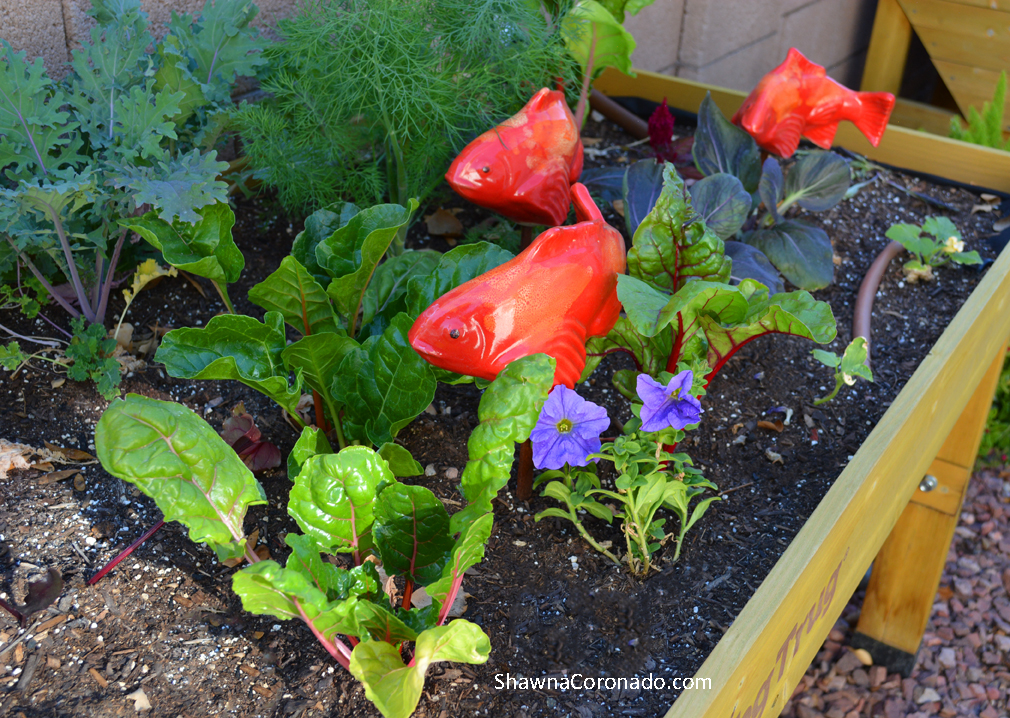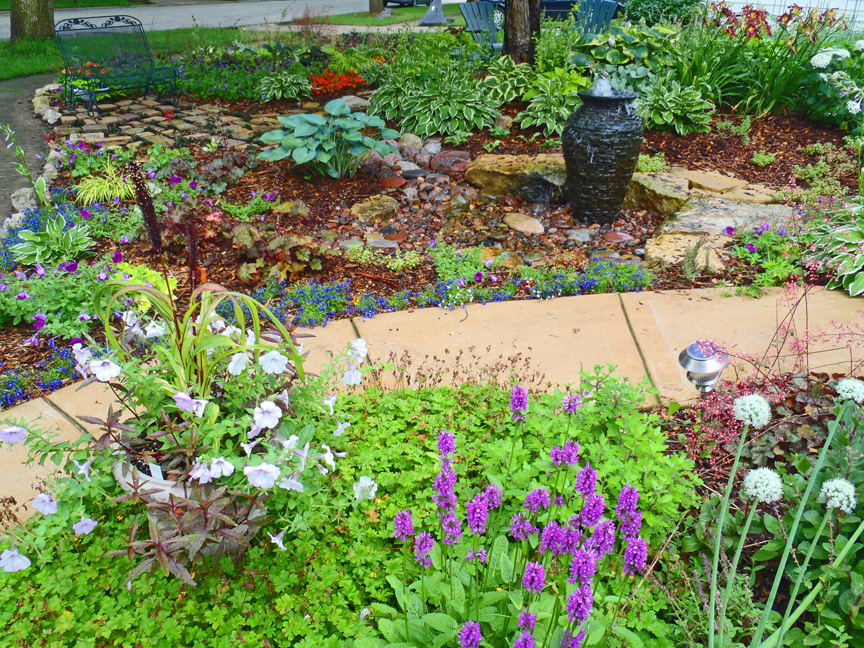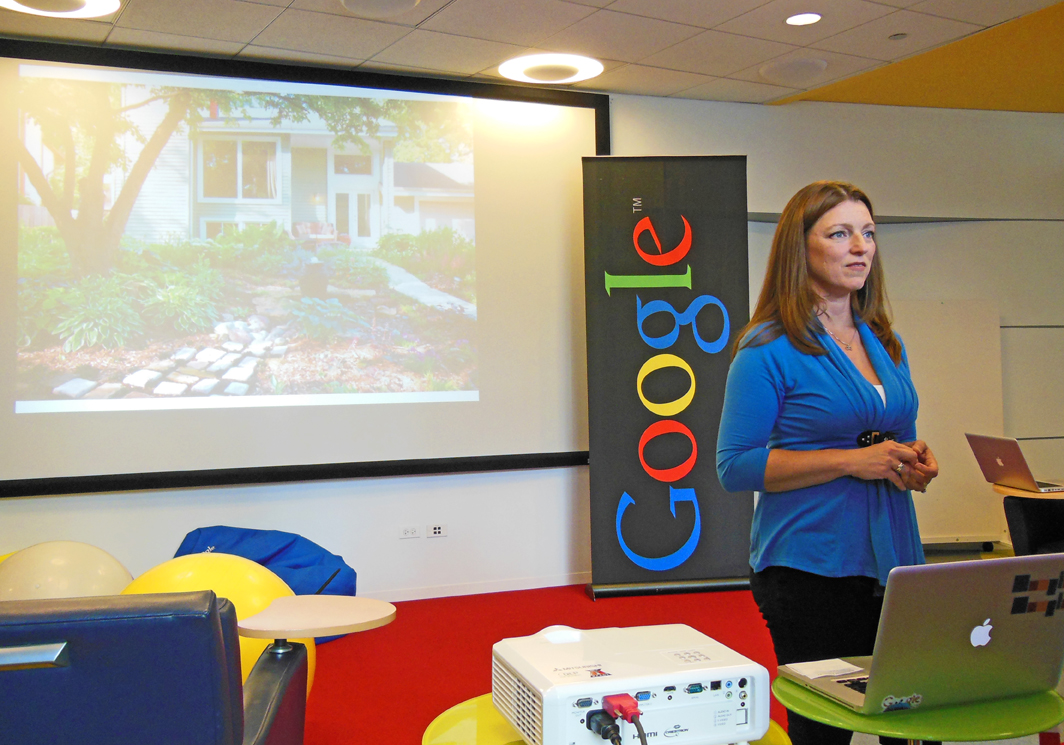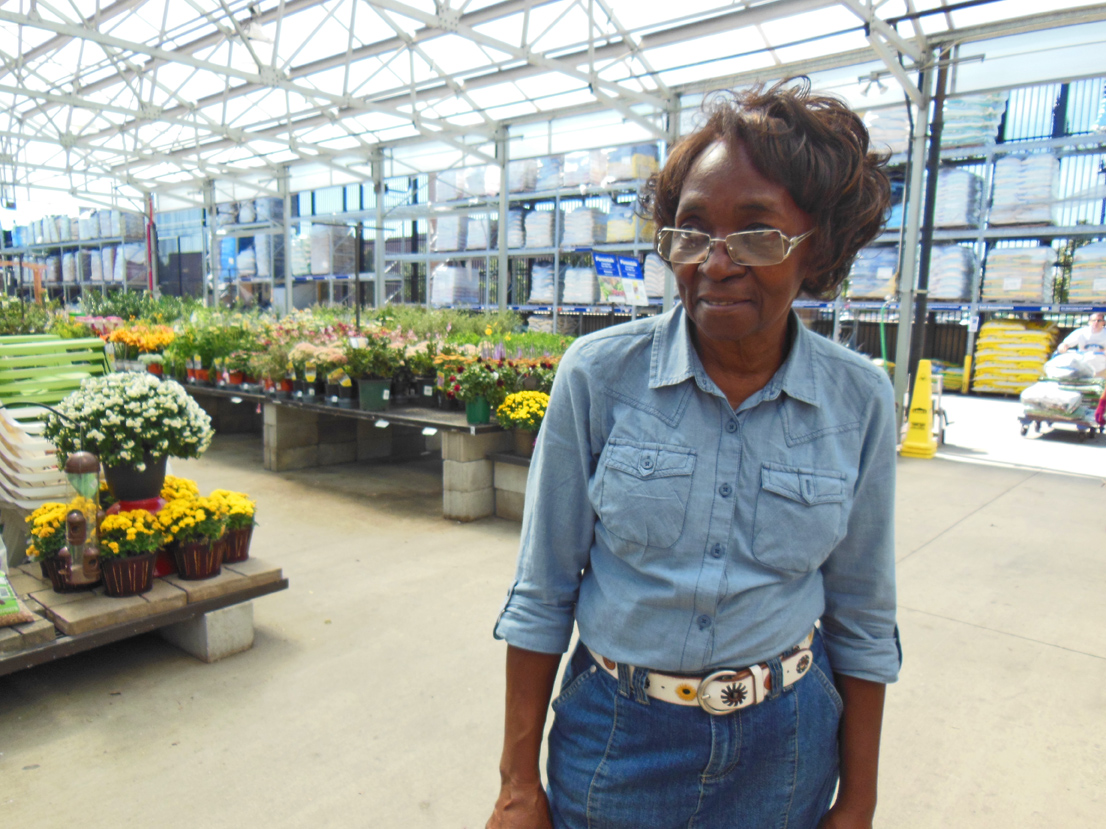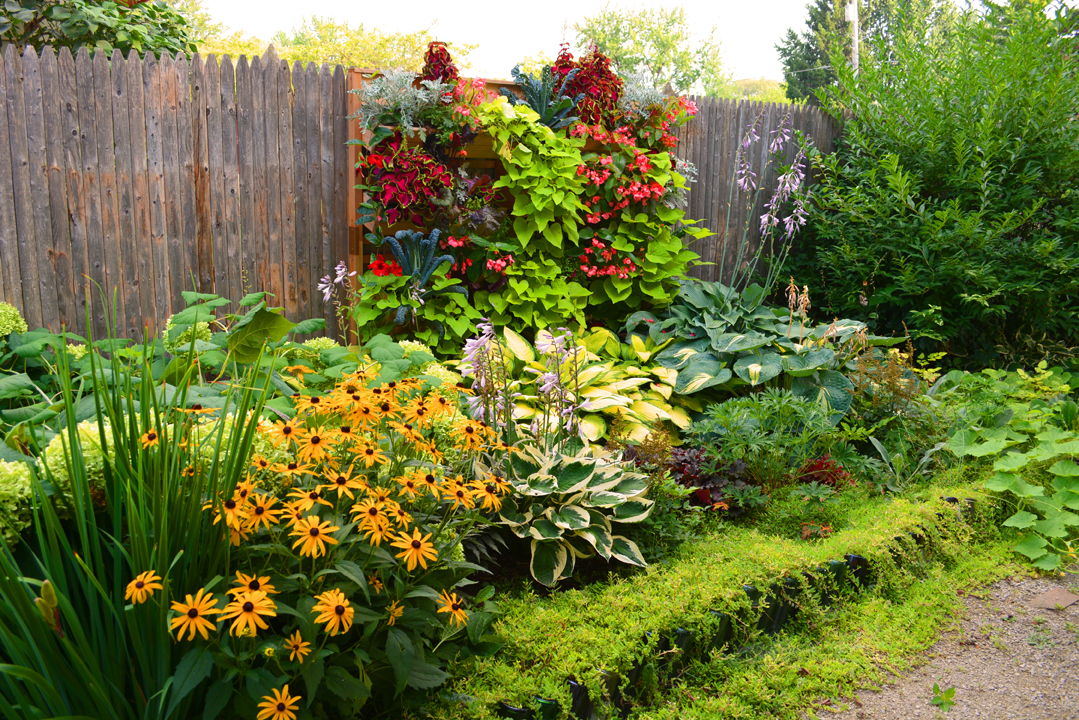Grow Shade Vegetable Plants in an Elevated Garden Bed
Grow shade vegetable plants in elevated beds? YES! By growing in beds that are a meter (or more) high, it enables gardening without bending over. Whether you have a condition such as severe spinal degenerative osteoarthritis, like I do, or you just want an easier garden experience, elevated gardens are for you. Learn how to grow shade vegetable plants in an elevated garden bed in this post. Get tips on elevated beds, best soil practices, and types of shade herb and vegetable plants that work.
Elevated Bed Gardening in Shade is Fun
Growing in an elevated bed can be amazingly successful. A plant consistently needs three basic things to grow well: quality soil, water, and sunlight. Each variety of plant has its own unique soil, water, and sunlight requirements. Some plants like shade, while other plants prefer sun. In order to plant herbs or vegetables in shady conditions, it helps to understand the basic growing techniques used in elevated growing. Once you understand the basics, then growing edible plants in shade is easy.
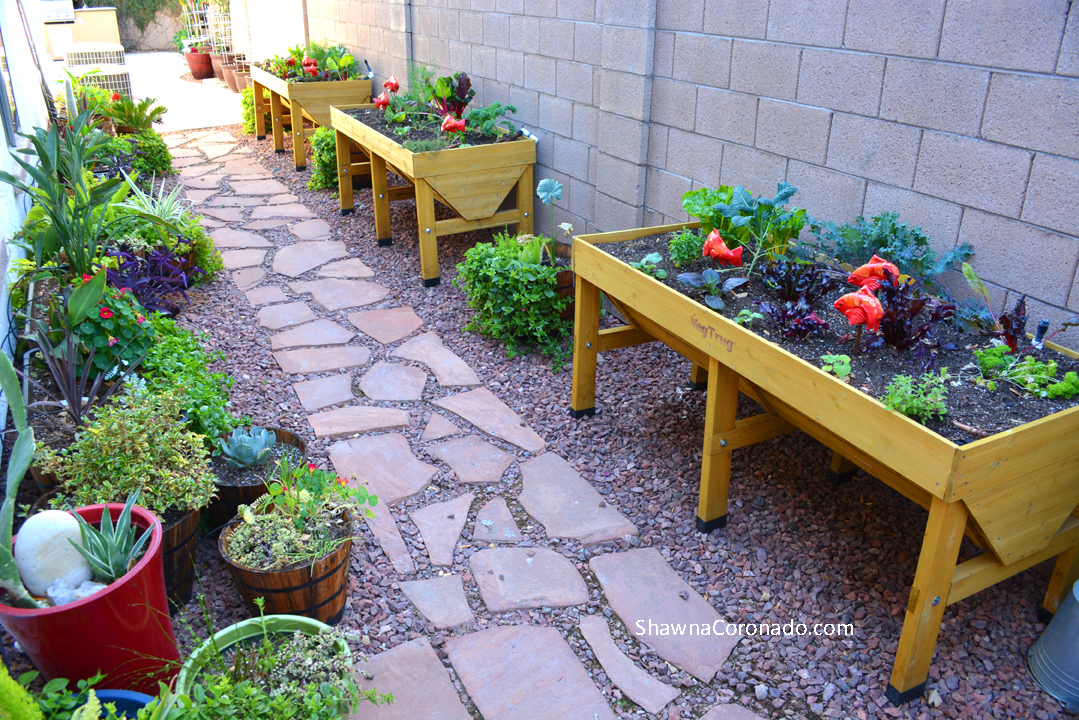
How to Grow an Elevated Garden Bed
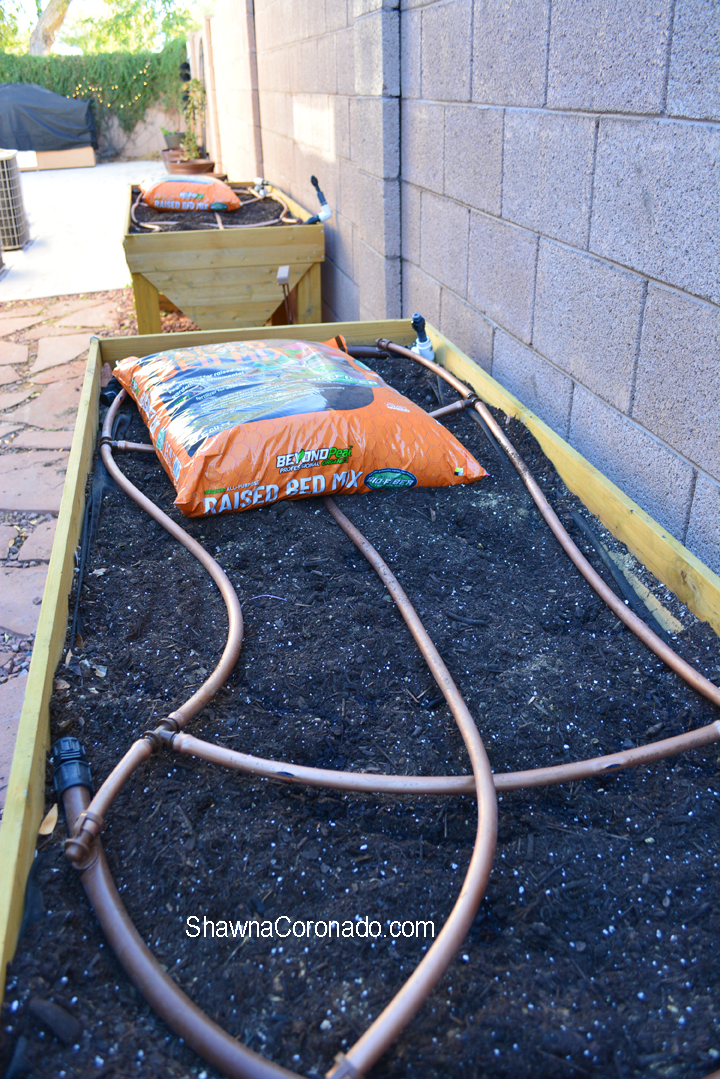
Elevated bed gardening brings the sight and scent of flowers and herbs up closer to a person’s eye and nose level. It can also be used to enhance gardening for people who have reduced sight or smell abilities as well for those who do not. Emotionally therapeutic gardens often contain herbs, vegetables, and other plants that enhance mental well-being. Perfect in elevated garden form, because it is easier on your body to garden up high, rather than bending down low.
A Few Garden Tips
Consistent irrigation is important because keeping your plants evenly watered helps the plants develop a strong root system. I used Rainbird irrigation lines set on a timer. You could easily use a Rainbird kit for an easy irrigation solution.
Whether you start with seeds, seedlings, or plants, plan your design with the eventual full size of the plant in mind. If, for example, you plant a row of sweet potato vines with less than an inch between the plants, they will soon overcrowd one another.
Before you place vegetative plants, first arrange the plants on top of the soil. Once you have the proper spacing and design, dig a hole for each plant. Add a bit of organic fertilizer according to package directions, then gently bury each rootball, watering them in well.
Easy Elevated Garden Bed Planting Steps
- Assemble your elevated bed system.
- Fill the bed with a preferred soil mix with organic fertilizer mixed in up to a level about 2 inches or 5 centimeters from the top of the bed (leaves room for watering).
- Irrigation or driplines should be buried just below the surface of the soil (fill the bed, add irrigation lines, top with more bags of soil – [above right]).
- Follow planting directions on seed packets using the mature size of a plant as a spacing guide
- If planting vegetative plants, dig a hole, pop the plant in, then make sure the container is irrigated well
Discount Coupon Code for a VEGTRUG Elevated Garden
Order a VegTrug at a 10% discount right now!!!
Go to the VEGTRUG WEBSITE and enter the discount voucher coupon code “SHAWNA10” and get started with elevated gardening today!
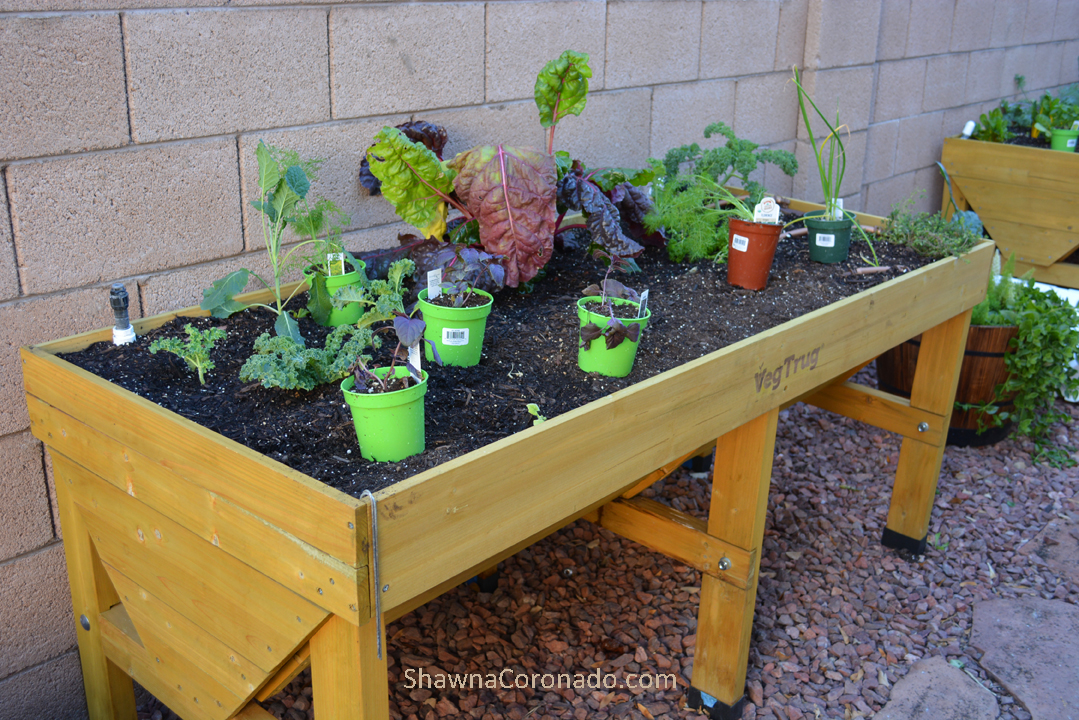
Best Soil Tips for Shade Vegetable Plants in Elevated Beds
Good organic soil is the secret to success: it is the most significant ingredient in the garden. If your plant has strong roots, then it will be able to survive through harsh conditions such as drought and disease. Healthy soil equals stronger roots.
Elevated Bed Gardening is Different from In-Ground Gardening
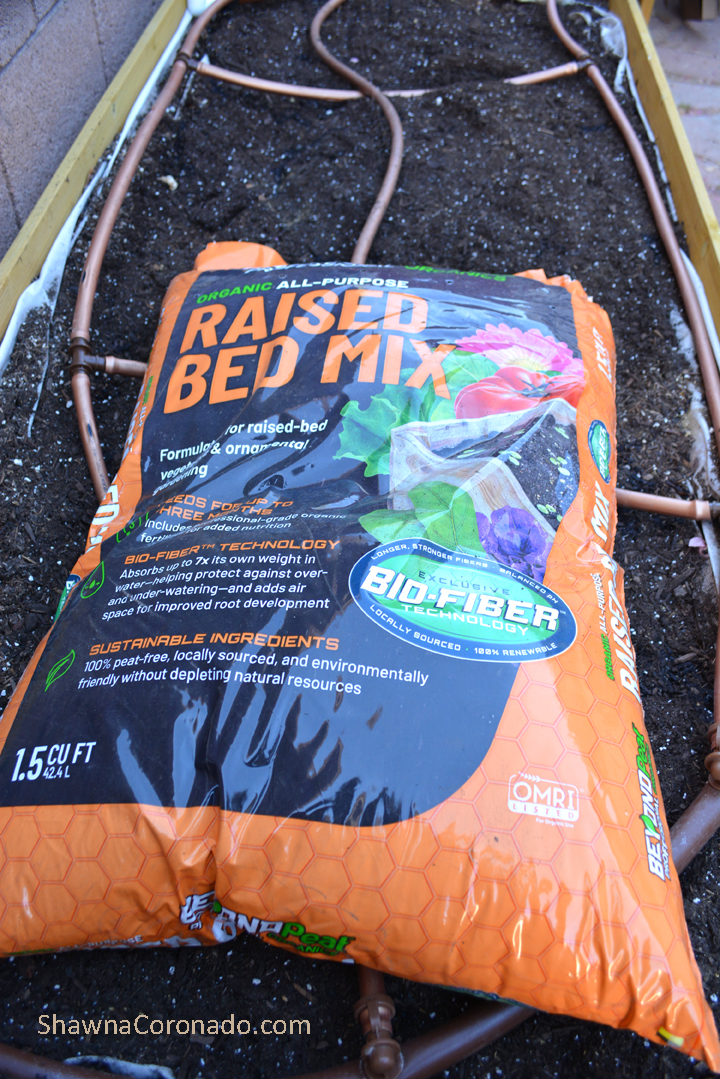
Ground soil is alive with millions of microbes that promote strong root systems. Improving the soil annually with organic matter can help build that strong system. Gardening in an elevated bed, living wall or containers is different than gardening in-ground, where the soil is rejuvenated by natural components that support plant health.
Simply opening a bag of potting soil and tossing it into a pot does not necessarily ensure a successful container garden, nor will using soil dug straight from the ground. Creating a soil combination built for the specific plants growing in a container makes a better growing medium that will help you be successful as a container or raised bed gardener.
Use Peat-Free Potting Soil for Shade Vegetable Plants in Raised Beds
One of my container garden secrets is to mix my favorite peat-free potting soil mix with one to two parts natural compost for raised beds. This secret soil combination enables water retention, while still encouraging soil drainage.
Peat bogs are important ecosystems. Bogs around the world are being harvested at a rate which prevents replenishment and disrupts the global carbon cycle. This is harming our ecosystem because peatlands are known to store one-third of Earth’s total soil carbon. I have been using a 100% peat-free, organic, soil product this season and have had a lot of success. Try Beyond Peat™ Professional Organics Raised Bed Mix in your own garden. Using an OMRI® certified organic product like Beyond Peat™ builds a healthier environment for all.
How to Amend Soil for an Elevated or Raised Garden Bed
Besides using peat-free soil and compost, I highly recommend adding worm castings to your planting mix. Worm castings help to retain moisture in your garden. Follow that by adding your favorite organic fertilizer (following package directions). Mix well before planting.
It is important that you only add natural or organic ingredients into your container soil; do not mix in non-certified organic water polymers or crystals, artificial fertilizers, or other chemicals. Focus on your personal wellness, and the health of your community, by only using organic and natural ingredients.
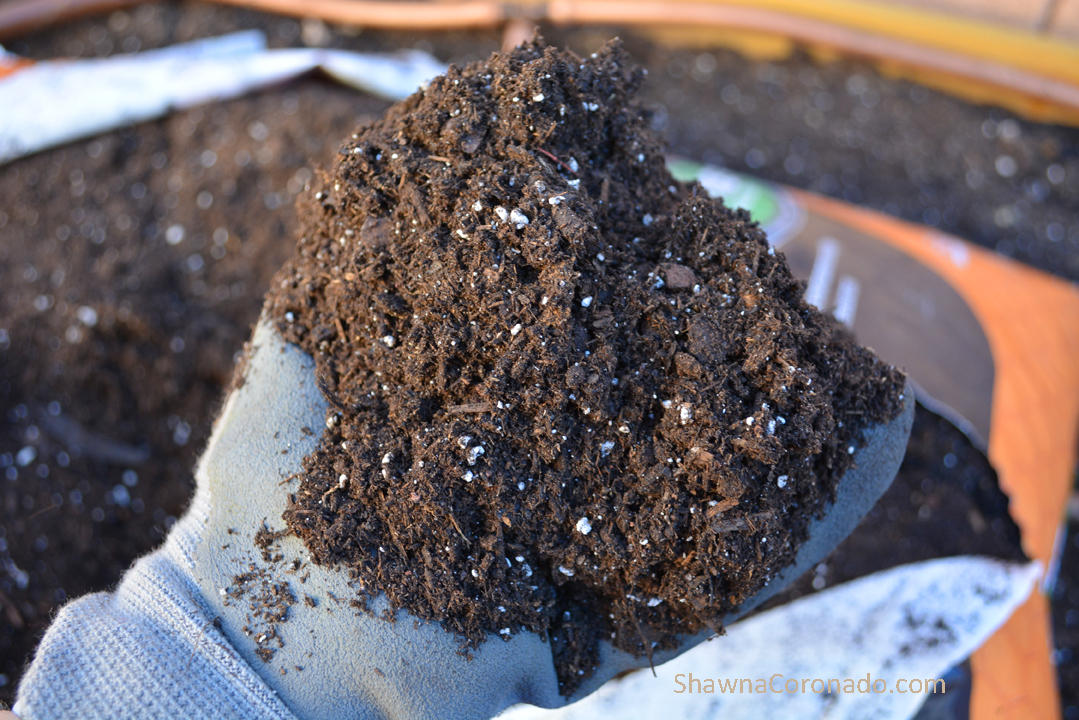
Shade Vegetable and Herb Growing Tips
Knowing that vegetables, fruits, and herbs prefer full sun, many gardeners, particularly those who live in urban environments, feel stymied when they consider establishing a kitchen garden. Although it might be more of a challenge to grow in the shade, it is surprisingly easy once you get started.
Growing produce in shade opens up growing areas you might not have previously considered: on balconies, along fence lines, lining patios and walkways, and between buildings. Best of all, they are perfect for elevated garden beds and smaller planting areas.
Produce such as herbs and leafy greens sometimes remain smaller when grown in heavy shade. Planting more closely together works well: you get smaller but more frequent harvests.
No Fruits and No Roots
There is an important rule to remember when planting in shade: no sun = no fruits and no roots. In other words, plants such as potatoes, which are roots, and tomatoes, which are fruits, are less likely to produce an abundant (or any) harvest in heavier shade. Leafy herbs and vegetables perform better in shadier conditions, while fruiting and rooting plants do not do as well.
Growing vegetables and herbs on a part-shade balcony, patio, or elevated kitchen garden is possible. All plants require some light exposure. Part shade is defined as approximately two to four hours of sun per day. Any sun under 6 hours per day is considered less sun and more shade. Full shade is considered under two hours of direct sun per day with perhaps only bright light exposure.
List of 20 Shade-Tolerant Herbs and Vegetables
- Arugula
- Basil
- Beans
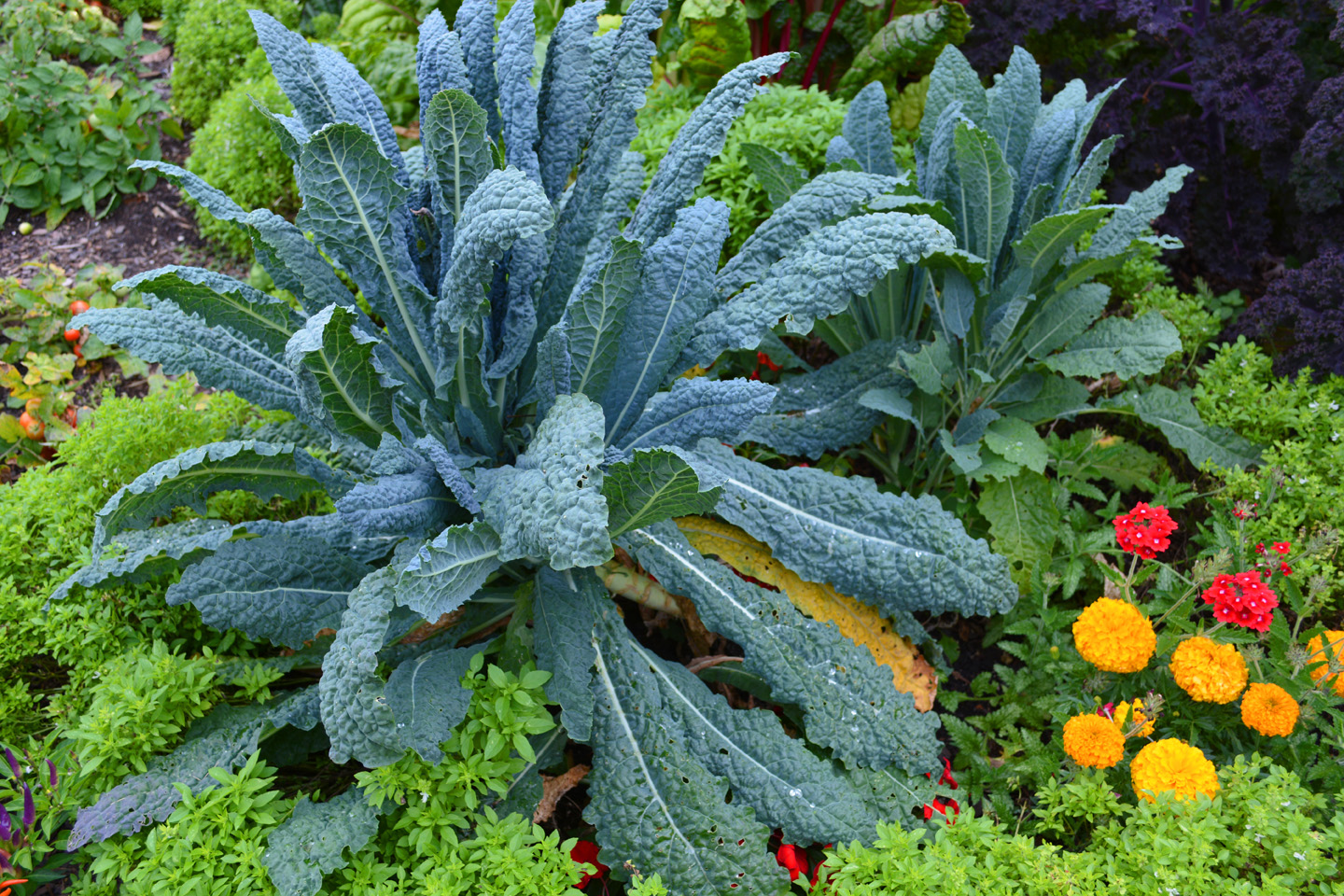 Beet greens
Beet greens- Celery
- Collards
- Corn salad mache
- Endive
- Kale
- Lettuces and greens
- Leafy herbs
- Malabar spinach
- Mustard greens
- Bok choy
- Peas
- Radishes
- Rhubarb
- Spinach
- Swiss chard
- Turnip greens
Gardening in elevated beds or lifted container gardens can make a true difference for your health (remember the coupon code SHAWNA10 if you click through and order). Using peat-free soil and organic fertilizer can help you and your community. Growing herbs and shade vegetable plants is not only possible; it is fun and healthy. Simply grow the right plants in the right soil for best success.
